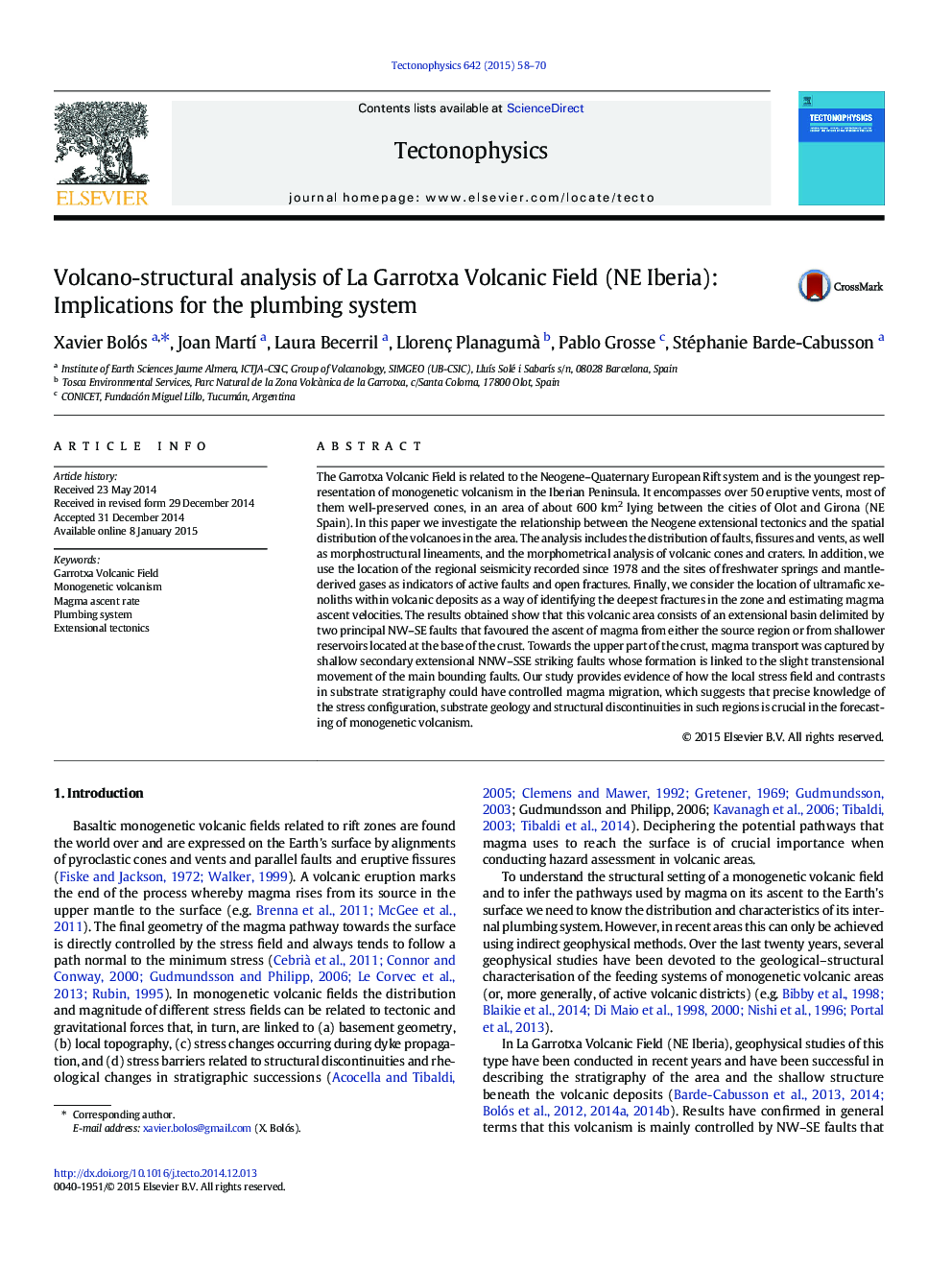| کد مقاله | کد نشریه | سال انتشار | مقاله انگلیسی | نسخه تمام متن |
|---|---|---|---|---|
| 4691733 | 1636750 | 2015 | 13 صفحه PDF | دانلود رایگان |

• Analyses of structural elements, vents, seismicity, freshwater springs and gases
• Xenoliths to identify the deepest fractures and estimate magma ascent velocities
• Transtensional main faults determine spatial distribution of the Garrotxa volcanism.
• Magma transport in the upper crust is captured by extensional secondary faults.
The Garrotxa Volcanic Field is related to the Neogene–Quaternary European Rift system and is the youngest representation of monogenetic volcanism in the Iberian Peninsula. It encompasses over 50 eruptive vents, most of them well-preserved cones, in an area of about 600 km2 lying between the cities of Olot and Girona (NE Spain). In this paper we investigate the relationship between the Neogene extensional tectonics and the spatial distribution of the volcanoes in the area. The analysis includes the distribution of faults, fissures and vents, as well as morphostructural lineaments, and the morphometrical analysis of volcanic cones and craters. In addition, we use the location of the regional seismicity recorded since 1978 and the sites of freshwater springs and mantle-derived gases as indicators of active faults and open fractures. Finally, we consider the location of ultramafic xenoliths within volcanic deposits as a way of identifying the deepest fractures in the zone and estimating magma ascent velocities. The results obtained show that this volcanic area consists of an extensional basin delimited by two principal NW–SE faults that favoured the ascent of magma from either the source region or from shallower reservoirs located at the base of the crust. Towards the upper part of the crust, magma transport was captured by shallow secondary extensional NNW–SSE striking faults whose formation is linked to the slight transtensional movement of the main bounding faults. Our study provides evidence of how the local stress field and contrasts in substrate stratigraphy could have controlled magma migration, which suggests that precise knowledge of the stress configuration, substrate geology and structural discontinuities in such regions is crucial in the forecasting of monogenetic volcanism.
Journal: Tectonophysics - Volume 642, 11 February 2015, Pages 58–70